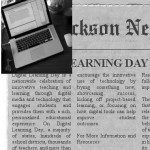Global Project Management:
Avoiding Last Minute Surprises
by Lana Boiko, PMP
It is a very special thrill to manage complex global initiatives and projects. Doing so gives you a sense of excitement, novelty, pride and accomplishment. It raises your awareness of all of those important global differences: time zones, stakeholders’ availability and engagement, local hierarchies, speed of execution, communications styles and about 100 other things you pick up as you go along.
I have been blessed to have a chance to work in a truly global setting for more than a year now, covering technical business management in the Middle East and Africa. This includes 69 countries, 5 times zones and innumerable cultural aspects and diversity. It is as good as it gets if you want to experience true diversity.
Lessons Learned
In my initial months on the job, there were a few misconceptions I had to correct for myself. And there is not a day goes by that I do not learn a few more things that help us to continue to advance and improve. It makes it easier to internalize and assimilate the lessons if I put them into two categories:
- Infrastructure dependencies
- Cultural dependencies
Infrastructure Dependencies
The first category refers to the objective state of the circumstances, such as basic ability to operate – power, connectivity, roads (never underestimate local traffic conditions), communication channels, environmental conditions, resource availability. Here are a couple examples to illustrate the surprises you can avoid.
Power – as an IT manager, it is absolutely critical for you to maintain your SLAs, and you have little chance of doing this if you have no confidence in your power availability, generator’s capacity and “plan B” if all else goes wrong. There will be times when your customers take ownership of the infrastructure while you are managing whatever shape or form the IT implementation requires. Please do not take for granted “power will be ready in two weeks” and UPS/generators can provide 12 hours of interrupted supply. Make the extra effort to reach out to the electricians’ team, schedule regular touch points with the power company representative, know what generators are there, confirm the type of fuel needed for your generators, the supply that is available and how long it would take to replenish that supply. And, by all means, build appropriate redundancy into your IT solution/project. Are you sure two power supplies per HA box is sufficient for the country housing your new data center?
Connectivity – your telco of choice should have an impeccable reputation. Take the time to understand what your telco is designing and offering to your project and customer. Go deep into the details, including redundancy of connectivity, and learn how that redundancy is achieved and maintained. I came across more than one instance where supposedly redundant dark fiber connections just happened to be laid in the same trench. If a builder accidently digs a few meters off their planned path and cuts your trench, there goes your redundancy. And it takes more that a few minutes to fix this situation. During this time, your client’s core applications are not available to the branches. Another concern (hopefully for very few countries you will operate in) is sabotage. Those copper cables are expensive, and may on occasion, be targeted for scrap metal by the local underprivileged population. You need to be aware of how secure (or not) your provider’s brick-and-mortar structure is. Whatever the situation may be, they need to ensure the appropriate required security measures to ensure your customer has no exposure.
Environmental conditions – this condition is especially tricky to deal with if you failed to understand and plan for the problems during your project planning phase. It is easy to detect and address power problems; however, environmentally caused corrosion is likely to leave you on the defensive if you did not address it before you put millions of dollars of equipment into a region. First, learn about the natural environmental circumstances of the region. What is the average humidity and do you need special equipment to control that? What metals are pervasive in the area? Silver and zinc are normally cause for alarm. Consider including appropriate filtering equipment in your deployments. Natural disaster prone areas always need special consideration.
Local resource availability – when you are committing to your client’s response requirements, remember to work off of the worst case scenario. There is certainly nothing wrong with providing to your client the commitments they require. However, you, as a manager are responsible for figuring out how you are going to deliver on those commitments. Take peak hour traffic conditions. How long will it take to get the local specialist there? How far is your DR from Prod? What if it gets complicated and the local talent needs help from your absolute best person? Where is your absolute best person located, and how long it will take you to get him/her to the problem area? Did you consider local visa requirements? Customs for any special tools and equipment you may need to import? If you are a master of those, you are pretty much invaluable to your project (assuming, of course, this is all covered during planning and put into your management and escalation procedures).
The list goes on, but if you can cover the basics in a solid way, you will be in a much better position to deal with the little surprises that are likely to arise every day.
Good luck!
Have you anticipated the possible infrastructure difficulties on your global projects? What others would you add to this list?
The next article will discuss cultural dependencies.
Avoiding Last Minute Surprises





